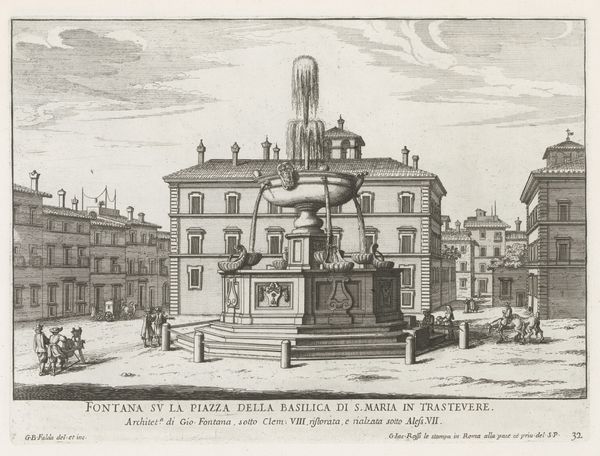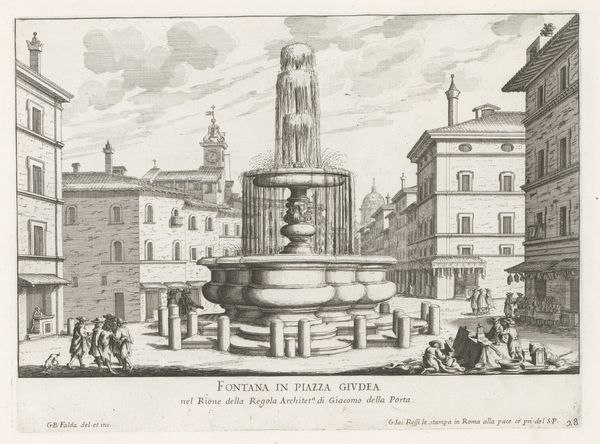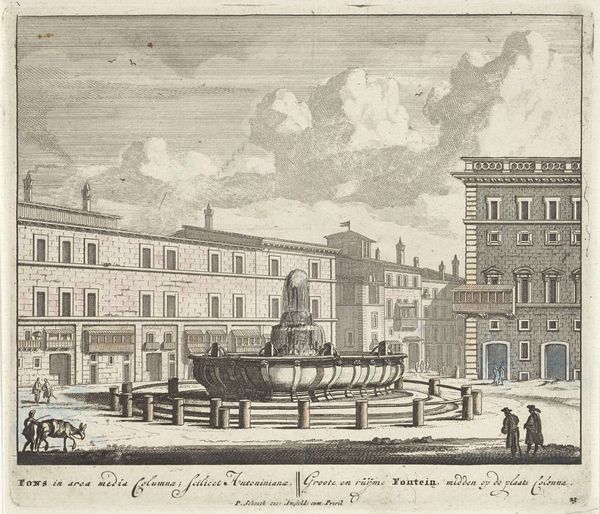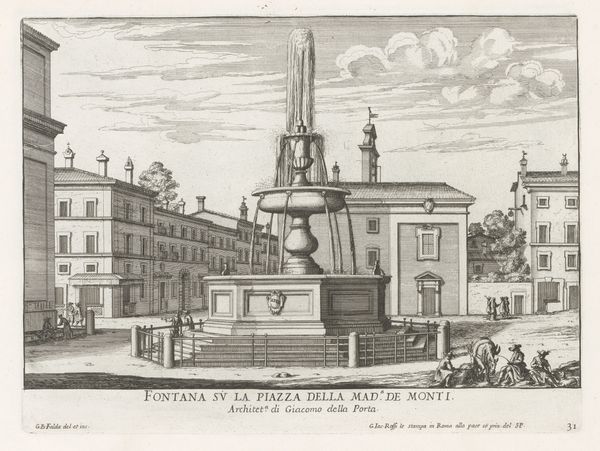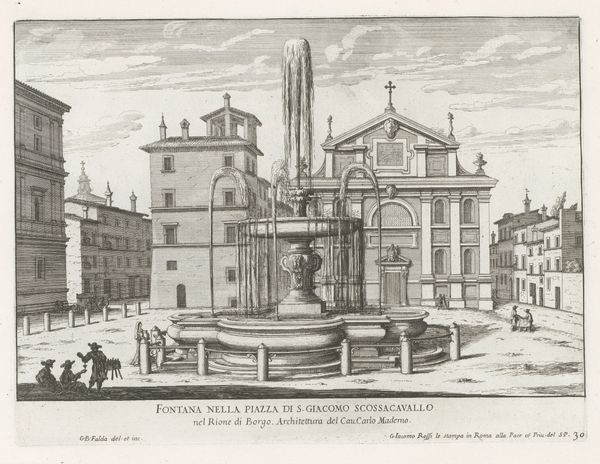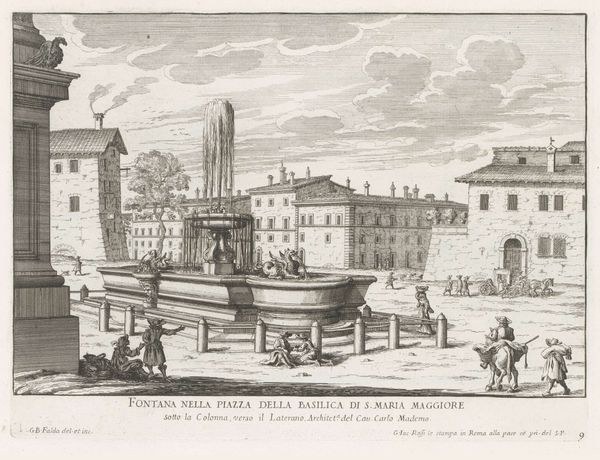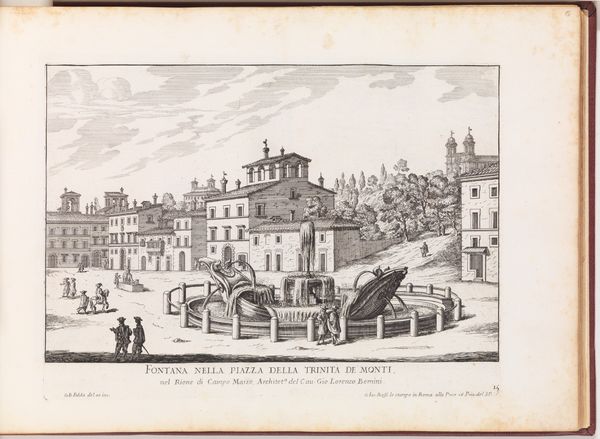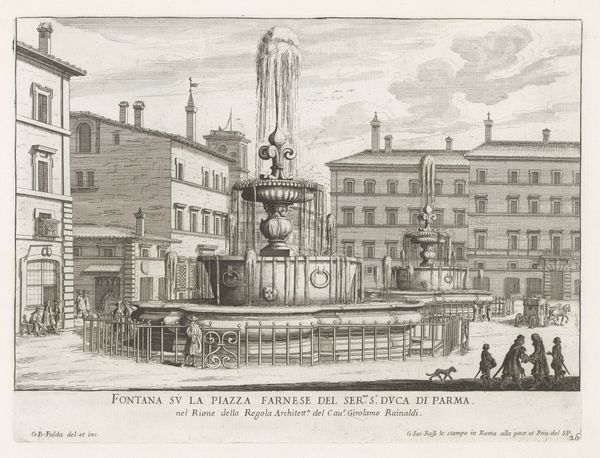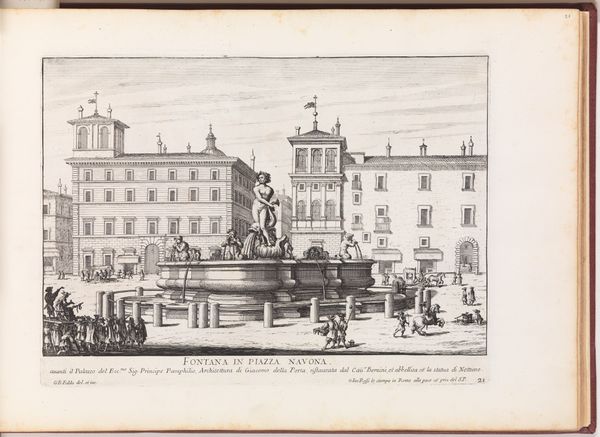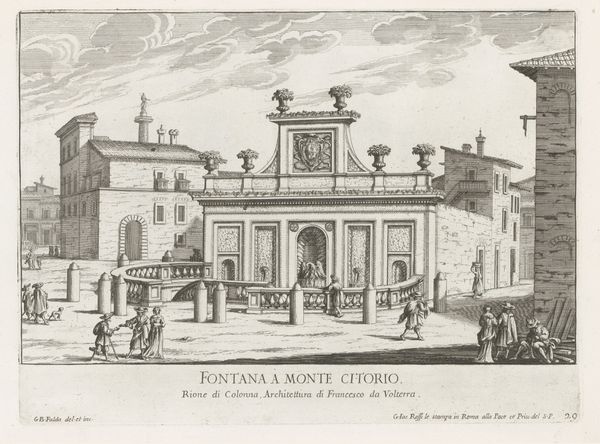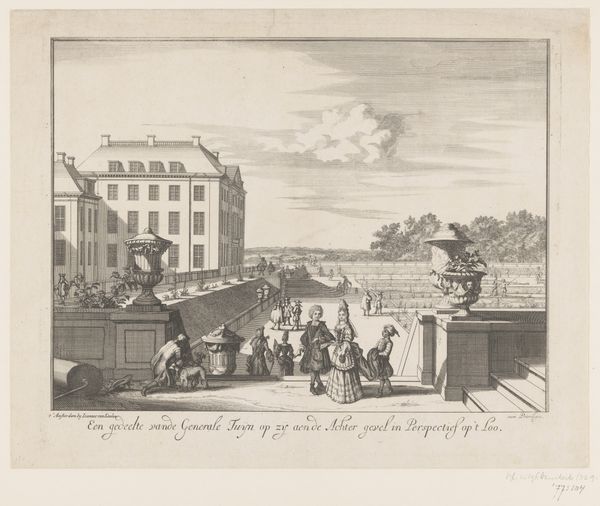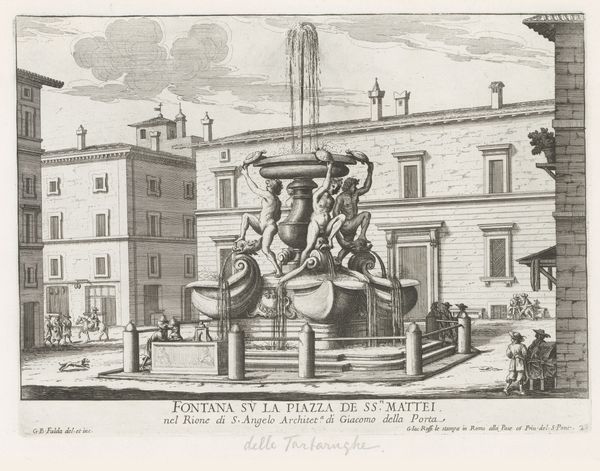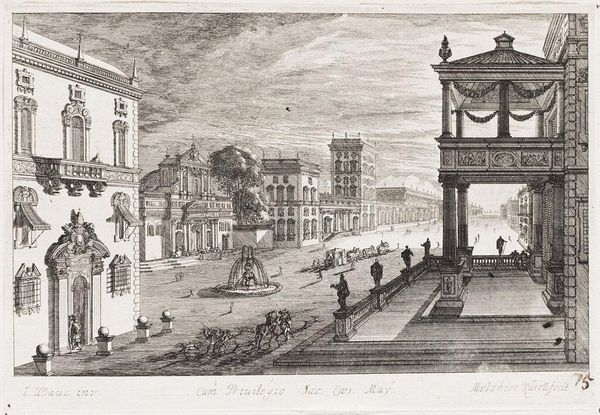
Fontana del Pantheon op Piazza della Rotonda te Rome 1653 - 1691
0:00
0:00
print, engraving
#
baroque
# print
#
landscape
#
cityscape
#
italian-renaissance
#
engraving
Dimensions: height 213 mm, width 287 mm
Copyright: Rijks Museum: Open Domain
Editor: This is Giovanni Battista Falda's "Fontana del Pantheon op Piazza della Rotonda te Rome," an engraving dating from sometime between 1653 and 1691. I find the contrast between the grandeur of the fountain and the everyday life around it quite compelling. How do you interpret this work? Curator: Falda’s engraving offers us a glimpse into 17th-century Rome, but it's more than just a pretty cityscape. It presents a carefully constructed image of power and social dynamics. Consider the placement of the fountain itself – a symbol of papal authority and urban control, designed to impress and provide a public service. But who benefited most from this public space? Editor: Well, everyone in the scene seems to be using the piazza in their own way... Curator: Precisely! And that's where it gets interesting. Notice how Falda depicts different social classes interacting, or perhaps just co-existing, within this carefully designed space. The engraving allows us to think about how urban spaces are never neutral. They are always political stages, reflecting and reinforcing existing power structures and social inequalities. The placement, scale, and function all reflect those in control. How do you think this image contributed to the creation, or perhaps the maintenance, of a particular Roman identity? Editor: That's a fascinating point. Maybe the image serves as propaganda, promoting Rome as a beautiful, functional, and harmonious city, despite the likely social tensions beneath the surface. Curator: Exactly. These images played a vital role in shaping perceptions and reinforcing narratives of civic pride. It’s about constructing an idealized version of urban life. The reality, as always, was likely far more complex and contested. Editor: I see it differently now. It is not just a pretty fountain. There is a power structure to appreciate and to question. Curator: And that's the crucial element. Engage with art as a social document, and you'll always find something new to question!
Comments
No comments
Be the first to comment and join the conversation on the ultimate creative platform.
